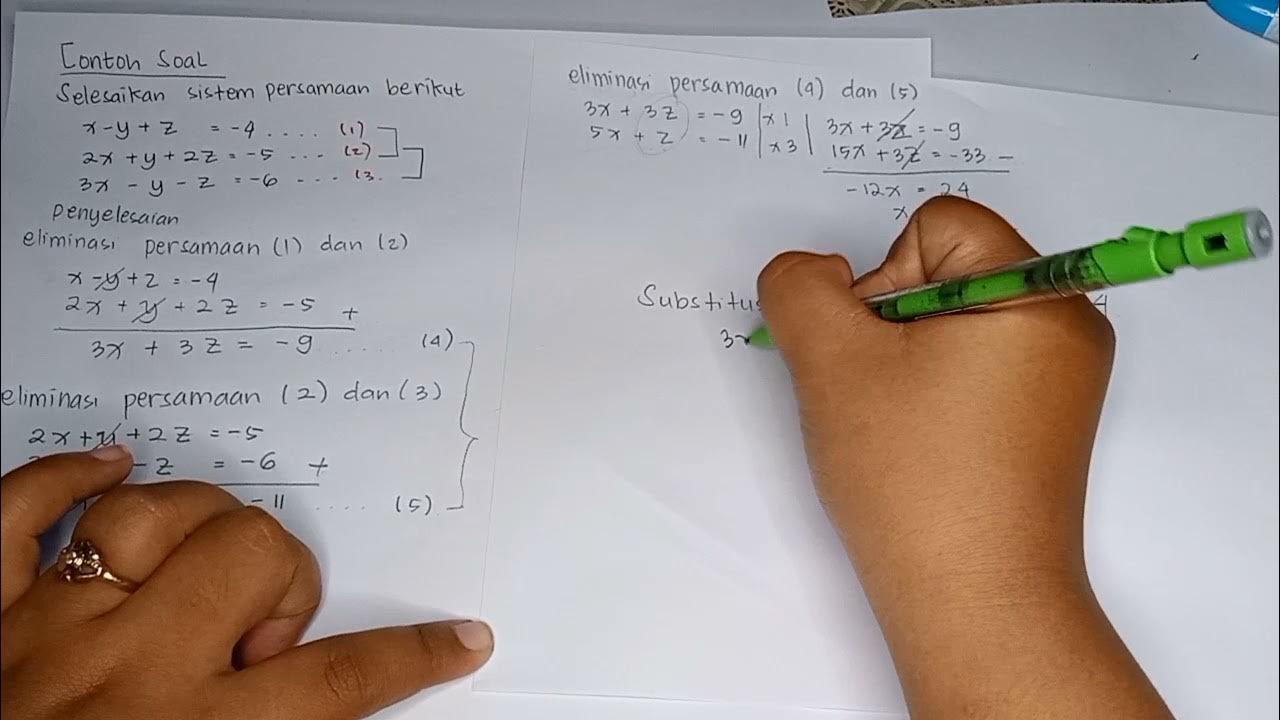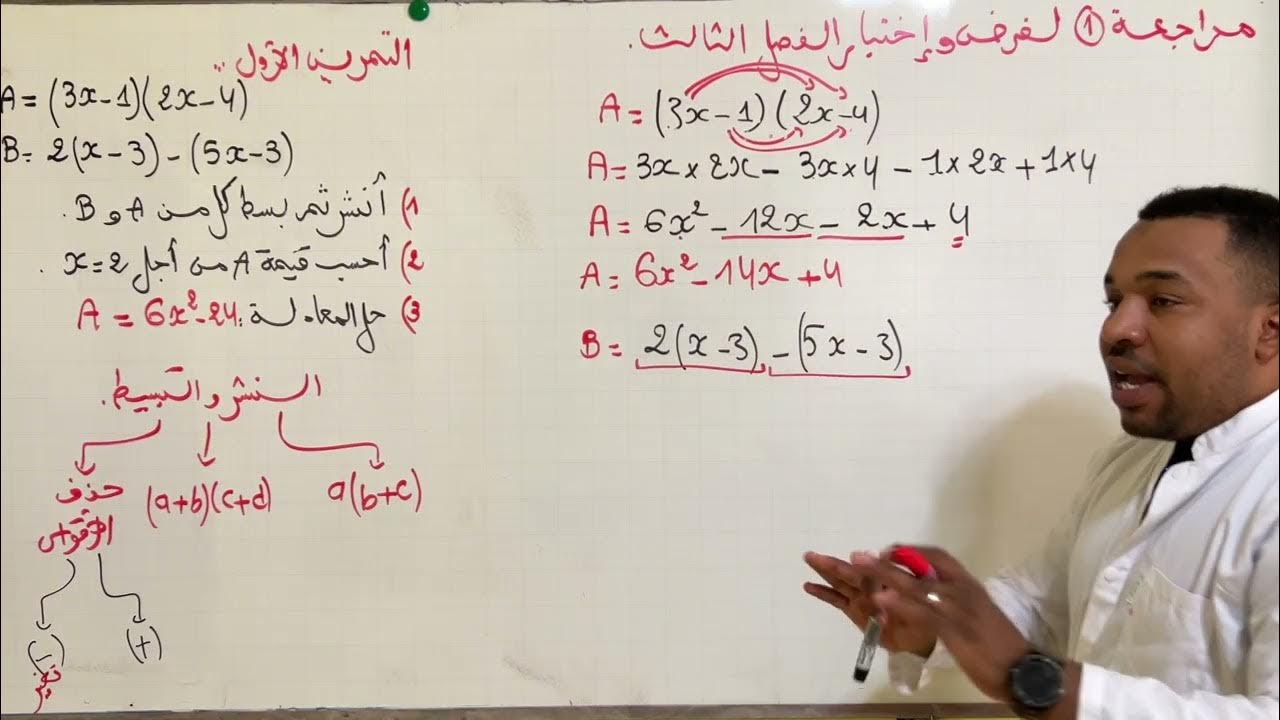SOLVING ALGEBRAIC EQUATIONS | GRADE 6
Summary
TLDRThis video lesson teaches students how to solve algebraic equations with variables on one side. Through various examples, the presenter demonstrates how to translate word problems into equations and solve for the unknown variable. Techniques such as adding, subtracting, multiplying, and dividing to isolate the variable are explored in detail. The video emphasizes checking solutions to ensure accuracy, guiding learners through simple and more complex problems with clarity and step-by-step instructions. By the end, students gain a solid understanding of solving basic algebraic equations.
Takeaways
- 😀 Understand how to translate word problems into algebraic equations.
- 😀 Learn the importance of isolating the variable on one side of the equation to solve it.
- 😀 Use inverse operations (addition, subtraction, multiplication, and division) to manipulate equations.
- 😀 Practice solving equations through two methods: moving constants to the other side or simplifying operations.
- 😀 Always perform the same operation on both sides of the equation to maintain balance.
- 😀 Verify your solution by substituting the value of the variable back into the original equation.
- 😀 Familiarize yourself with common word problem phrases like 'sum,' 'difference,' and 'twice a number.'
- 😀 Understand how to deal with equations involving both constants and variables on both sides.
- 😀 Recognize when to simplify parts of an equation (e.g., simplifying 9 + 2 to 11).
- 😀 Practice solving equations with various operations (addition, subtraction, multiplication, division) to build confidence.
Q & A
What is the first step in solving an algebraic equation?
-The first step is to translate the word problem into a mathematical equation. For example, 'A number increased by 7 is 25' can be translated to the equation 'm + 7 = 25'.
Why is it important to isolate the variable in an equation?
-Isolating the variable is important because it allows us to find the value of the unknown variable. We do this by using opposite operations to move constants to the other side of the equation.
What operation should be used to get rid of a constant added to a variable?
-To get rid of a constant added to a variable, you should subtract the constant from both sides of the equation.
How do you check if your solution to an equation is correct?
-To check your solution, substitute the value you found for the variable back into the original equation. If both sides of the equation are equal, the solution is correct.
What is the opposite operation of addition?
-The opposite operation of addition is subtraction. For example, if an equation has 'x + 7', you subtract 7 to isolate the variable.
What do you do when the equation involves subtraction, such as 'a number minus 6 is 24'?
-When the equation involves subtraction, you add the constant to both sides of the equation. For example, 'y - 6 = 24' becomes 'y = 24 + 6', simplifying to 'y = 30'.
How do you solve an equation like 'twice a number is 36'?
-For an equation like '2b = 36', you isolate the variable by dividing both sides of the equation by 2. This gives 'b = 36 ÷ 2', which simplifies to 'b = 18'.
In an equation involving multiplication, how do you isolate the variable?
-To isolate the variable in an equation involving multiplication, you divide both sides of the equation by the coefficient. For example, '2b = 36' is solved by dividing both sides by 2 to get 'b = 18'.
What should you do if an equation has multiple operations, such as 'twice a number decreased by 3 is the sum of 9 and 2'?
-If an equation has multiple operations, simplify both sides first. For example, '2x - 3 = 9 + 2' becomes '2x - 3 = 11'. Then, isolate the variable by adding 3 to both sides, giving '2x = 14', and finally divide both sides by 2 to solve for 'x = 7'.
How do you solve an equation where a number is divided by a constant, such as 'n divided by 8 is 11'?
-In this case, you multiply both sides of the equation by the constant. For 'n ÷ 8 = 11', multiply both sides by 8 to get 'n = 11 × 8', which simplifies to 'n = 88'.
Outlines

このセクションは有料ユーザー限定です。 アクセスするには、アップグレードをお願いします。
今すぐアップグレードMindmap

このセクションは有料ユーザー限定です。 アクセスするには、アップグレードをお願いします。
今すぐアップグレードKeywords

このセクションは有料ユーザー限定です。 アクセスするには、アップグレードをお願いします。
今すぐアップグレードHighlights

このセクションは有料ユーザー限定です。 アクセスするには、アップグレードをお願いします。
今すぐアップグレードTranscripts

このセクションは有料ユーザー限定です。 アクセスするには、アップグレードをお願いします。
今すぐアップグレード関連動画をさらに表示

Geo 3 4c Two Column Algebraic Proofs VIDEO

SISTEM PERSAMAAN LINIER TIGA VARIABEL

Algebraic Fractions (Equations) - GCSE Higher Maths

الثالثة متوسط|| المراجعة 1 لفرض و اختبار الفصل الثالث في مادة الرياضيات

Konsep Dasar Sistem Persamaan Linear Dua Variabel (SPLDV) | Matematika Wajib Kelas 10

EQUAÇÃO do 1ºGRAU com DUAS incógnitas | Matemática Básica | #10
5.0 / 5 (0 votes)
